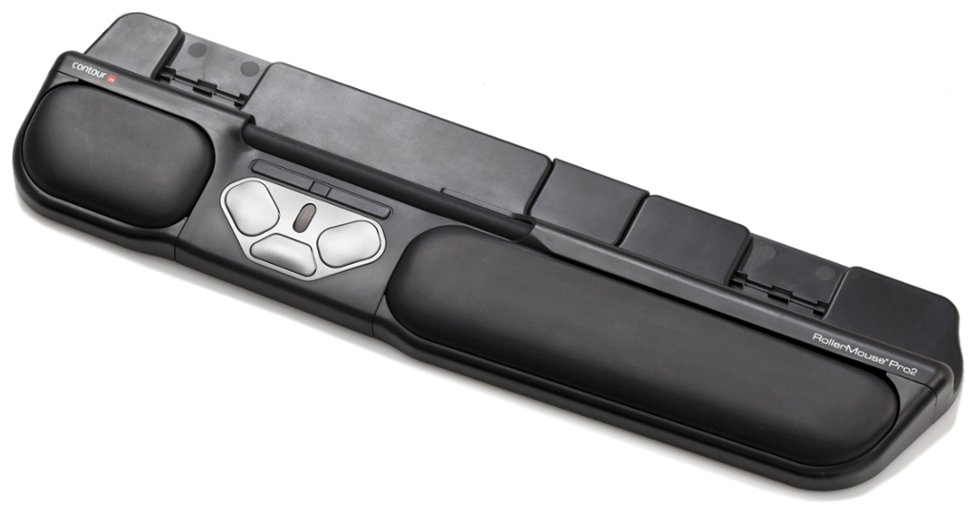Since I work in an office at a computer, my hands are constantly making small movements for typing and using the mouse. From what I understand, this type of repetitive motion over time can cause Repetitive Stress Injury, increase the likelihood of developing Carpal Tunnel Syndrome, make your fingers fall off, exacerbate global warming, and all manner of
mass hysteria. So in an effort to make sure I don't kick the bucket in five years because of workplace hazards, I have tried to engage in some habits at work to keep the ol' ticker going a little longer:
• I ride my bike to work. It's only 2.5 miles, but it's better than nothing. Usually I bike in the morning, then bike home for lunch, and drive back in the afternoon. With a summer of temps above 100 degrees, things get a little too warm to be biking to and from an office in the afternoon.
• I drink lots of water. For years now, I have made a conscious effort to consume one 32-ounce bottle of water before lunch and another one after. I still drink a can of pop each day though :)
• I use a
GeekDesk that allows me to stand all day. Sitting, as it turns out, is
way bad for people so for the past year and a half I have basically stood up at work. Sometimes I lower my desk if I'm having one of those days were standing is just a little too tiresome, but that's generally about a half hour or less. I could write a whole post on how great it is to stand up in the office all day, but I don't want to get too sidetracked here. Suffice it to say, it's pretty kewl.
• About a week and a half ago I started using a
RollerMouse Pro2, which brings me to the subject of this blog post.
 |
| The RollerMouse Pro2. Like I told the guy in their service department, "it looks kind of weird." |
 |
| Here it is with a keyboard attached. Whee! |
For a while now I've had some minor aches and whatnot while at work, presumably from all the typing and moving the mouse. Back in spring we had an afternoon seminar on workplace health and how to improve our daily habits to stave off atrophy, and one of the things that was mentioned by the facilitator was to get a mouse like this one to reduce the stress of constantly reaching back and forth for the mouse. She could have been speaking directly to me, because this is exactly what has been hurting my hand for some time now. I talked things over with my supervisors and they agreed to get me this pointing device on a
trial basis to see how it works out. So here's my thoughts so far...
• It didn't take nearly as long to get used to as I thought it would. Instead of a trackpad, you roll a little bar up and down and back and forth, which seems kind of goofy until you try it. Then something in your brain clicks and it just kind of makes sense.
• It is very comfortable. Much moreso than moving my hand over to the mouse and back all day long.
• There are seven buttons, which makes it super easy to do just about anything. I'm not kidding either, and they aren't paying me to say this. There is even a dedicated "Copy" button and "Paste" button. Why don't normal mice have this feature? (On my Logitech Laser Mouse I had to manually map "ctrl-c" and ctrl-v" to two separate buttons)
• I was a little concerned that the bar would not be able to accommodate a dual-screen setup like I have at my work, but it actually does quite nicely. Let's say your pointer is on the right side of the right screen and you move the bar to bring the pointer over to the Start menu on the left side of the left monitor. Pretty soon the bar hits the physical edge of its enclosure, and the pointer hasn't made it across the entire screen area yet. Not cool! Thankfully, the makers of this little device thought of a solution. Just keep forcing the bar to the left, and it will "click." Voilà! The pointer instantly snaps to the left side of the screen. It took me a day to figure this out, and it's a really nice feature that has already saved me many headaches.
• My hands don't hurt as much. In fact, my right hand is just fine and since migrating to this new mouse it has had none of the usual aches that it used to. Granted, it's only been a week or so but it's an improvement.
So there you have it. So far so good, but we'll see how this thing holds up in the long run. Right now I am optimistic though, and my hands and wrists are already thanking me :)







